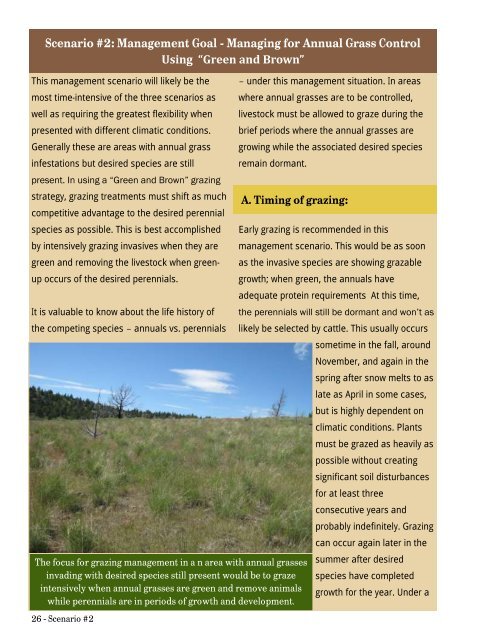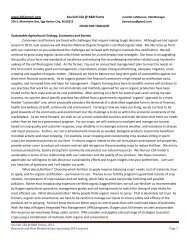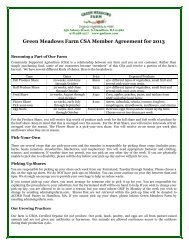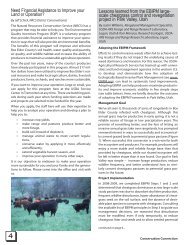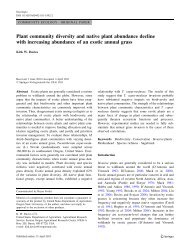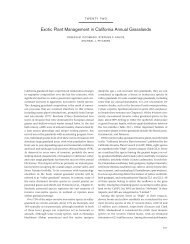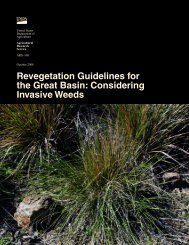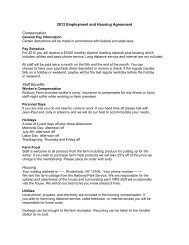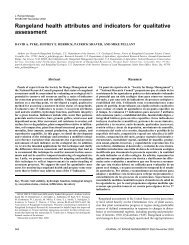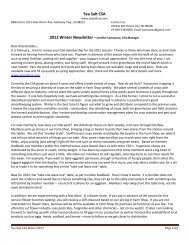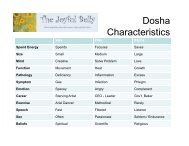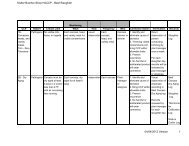“Green and Brown” Grazing Strategy
“Green and Brown” Grazing Strategy
“Green and Brown” Grazing Strategy
You also want an ePaper? Increase the reach of your titles
YUMPU automatically turns print PDFs into web optimized ePapers that Google loves.
Scenario #2: Management Goal - Managing for Annual Grass Control<br />
Using <strong>“Green</strong> <strong>and</strong> <strong>Brown”</strong><br />
This management scenario will likely be the<br />
most time-intensive of the three scenarios as<br />
well as requiring the greatest flexibility when<br />
presented with different climatic conditions.<br />
Generally these are areas with annual grass<br />
infestations but desired species are still<br />
present. In using a <strong>“Green</strong> <strong>and</strong> <strong>Brown”</strong> grazing<br />
strategy, grazing treatments must shift as much<br />
competitive advantage to the desired perennial<br />
species as possible. This is best accomplished<br />
by intensively grazing invasives when they are<br />
green <strong>and</strong> removing the livestock when greenup<br />
occurs of the desired perennials.<br />
It is valuable to know about the life history of<br />
the competing species – annuals vs. perennials<br />
– under this management situation. In areas<br />
where annual grasses are to be controlled,<br />
livestock must be allowed to graze during the<br />
brief periods where the annual grasses are<br />
growing while the associated desired species<br />
remain dormant.<br />
A. Timing of grazing:<br />
The focus for grazing management in a n area with annual grasses<br />
invading with desired species still present would be to graze<br />
intensively when annual grasses are green <strong>and</strong> remove animals<br />
while perennials are in periods of growth <strong>and</strong> development.<br />
26 - Scenario #2<br />
Early grazing is recommended in this<br />
management scenario. This would be as soon<br />
as the invasive species are showing grazable<br />
growth; when green, the annuals have<br />
adequate protein requirements At this time,<br />
the perennials will still be dormant <strong>and</strong> won’t as<br />
likely be selected by cattle. This usually occurs<br />
sometime in the fall, around<br />
November, <strong>and</strong> again in the<br />
spring after snow melts to as<br />
late as April in some cases,<br />
but is highly dependent on<br />
climatic conditions. Plants<br />
must be grazed as heavily as<br />
possible without creating<br />
significant soil disturbances<br />
for at least three<br />
consecutive years <strong>and</strong><br />
probably indefinitely. <strong>Grazing</strong><br />
can occur again later in the<br />
summer after desired<br />
species have completed<br />
growth for the year. Under a


